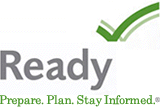Chemical Emergency Information for First Responders
- Emergency Response Cards
Detailed tables describing the necessary personal protective equipment (PPE) & actions for different types of exposure to each agent. (From the National Institute of Occupational Safety & Health [NIOSH]) - Emergency Room Procedures in Chemical Hazard Emergencies
Step-by-step protocol (from the National Center for Environmental Health [NCEH]) - Managing Hazardous Material Incidents
Planning guide for the management of contaminated patients (from the Agency for Toxic Substances and Disease Registry [ATSDR]) - Medical Management Guidelines for Unidentified Chemicals
Basic victim management recommendations to follow when the chemical is not known (from the Agency for Toxic Substances and Disease Registry [ATSDR]) - Developing and Maintaining Emergency Operation Plans - Comprehensive Preparedness Guide (CPG) 101, Version 2.0(PDF - 1.86 MB)
Guidance on the fundamentals of planning and developing emergency operations plans (from the Federal Emergency Management Agency [FEMA]) - Strategy for Developing a Community Chemical Response Plan
How to set community priorities and create plans for responding to chemical disasters (from the U.S. Department of Health and Human Services [HHS]). - Guidance on Initial Responses to a Suspicious Letter/Container With a Potential Biological Threat(241 KB/6 pages)
Guidelines for local responders, based on existing procedures, on the initial response to letters, packages, or containers containing suspicious powders, liquids, or other materials. Developed by HHS/CDC, FBI, & DHS.
- Page last reviewed: May 31, 2013
- Page last updated: November 18, 2015
- Content source:
- Maintained By:


 ShareCompartir
ShareCompartir
